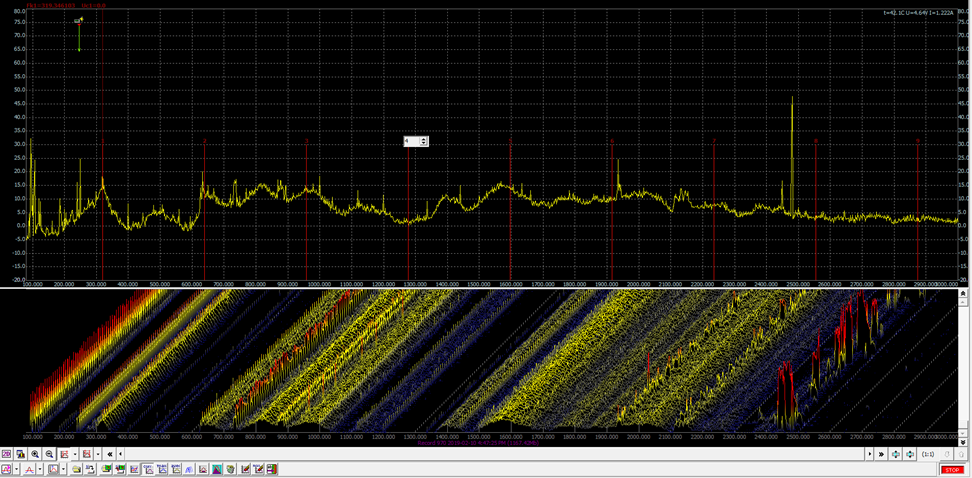Multiple Reference Trace Comparison
RadioInspector operators can save any trace during data collection or from any historical (or portion of any historical) saved spectrum scanning file as a reference trace for comparative analysis against the current, minimum, maximum or average values trace. An unlimited number of reference traces can now be selected and displayed on the spectrum scanning GUI simultaneously. Each uploaded trace has a settings bar displayed which allows the trace to be added or removed from the display as required as well as to adjust the db level for better visual separation between traces. Any trace can be selected and used as the current reference trace, and the current reference trace can be switched between all displayed traces as required.
In addition, all selected traces can be merged into a new single trace and saved separately. Operators can merge as many traces as they wish over any amount of time, while keeping all individual trace files in the database.

The operator can also choose to display the differences trace which clearly indicates any changes in the spectrum. The operator can display the results visually as a positive difference or a 2D difference. When the difference trace is activated, the 2D waterfall display changes to indicate the differences, further enhancing visual analysis.

Signal Harmonics Display
RadioInspector provides the ability to calculate and display the location of harmonics on the scanning GUI for any selected signal of interest (SOI) across the entire spectrum. Once displayed, each harmonic position is numbered according to the primary signal selected. The operator then has the option to change the specific number of any harmonic (changing the primary signal location) and subsequently all harmonics are recalculated and displayed.

This new feature compliments the ability to display both signal harmonics as well as identify interpolation to the 7th order to determine sources of interference during post analysis using the RadioInspector RP post processing program.

